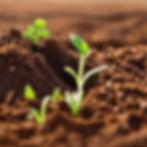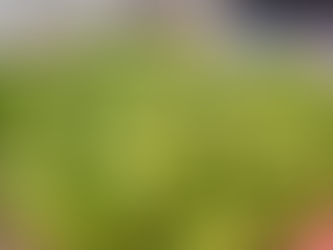

Why is it essential to prioritize the soil in our building development decisions?
New soil science recognizes the importance of the “Soil Food Web.” This science has documented scientific studies that illustrate the life beneath our feet. It’s based on agriculture but is easily used in reference to our yards and community health. It's called a web because they’ve identified communication between plants, microorganisms, animals, and fungi. Like our bodies, this communication occurs through electrical current and chemical interaction. I find this website extremely helpful if you’re interested in learning more.
This all translates to our development and farming practices of stripping the land of trees, shrubs, and animals, planting a monoculture of grass, and treating it with chemicals. We kill all that keeps the carbon, which works naturally within the system, in the soil. We must go back to planting all we can on our properties to pull the humidity out of the air and back into the soil. CO2 is part of water, and there is too much in the atmosphere.
As with most science, soil science is ever-evolving. We know soil is created naturally in an undisturbed forest environment through the processes of an ecosystem. Soil created in this natural system is rich in humus, bits, and pieces of plant and animal material. Microorganisms break down this material through their own daily life processes. Natural systems produce nutrient-rich soil far more capable of holding moisture than we’ve left ourselves in our yards, parks, and developments. In other words, if we changed our development laws and practices to reflect this reality, we would have far more topsoil and less flooding.
A bit of history.
Before World War II, American views on yards and their maintenance were very different than now. While there were mowed lawns, a product of the European aristocratic landed elite and wealthy gardens, they were most often small as the average homeowner didn’t have the tools to manage larger. They also used their property to grow food. They often used natural fertilizers to help plants grow and stave off pests and diseases.
After World War II a plant breeder whose main interest was to feed the world, named Norman Borlaug. He won the Nobel Peace Prize in 1970 for breeding a wheat species that could produce more grain per plant on less land. Malnutrition decreased across the country as farmers planted the wheat, and it was dubbed the “Green Revolution.” Learn more here.
The problem is that the plant was bred, knowing it would need water and fertilizer to grow anywhere. They grew it in the prairies and deserts, and when trees were in the way, they took them down. Some saw this as a business and have become one of the largest monopolies. As this was promoted to farmers and subsidized by USDA over time, chemical fertilizer companies grew. They recognized a market in the suburbs, invested in schools and universities, and taught the importance of using chemicals to grow monocultures.
Documentaries
Intelligent Trees Trees talk, know family ties and care for their young? Peter Wohlleben ('The Hidden Life of Trees') and Suzanne Simard (The University of British Columbia, Canada) have been observing and investigating communication between trees over decades. Intelligent Trees features the main observations that are covered in Peter Wohlleben's best selling book. https://www.amazon.com/Intelligent-Trees-Peter-Wohlleben/dp/B01LWIEY4F
Fantastic Fungi
Fantastic Fungi, directed by Louie Schwartzberg, is a consciousness-shifting film that takes us on an immersive journey through time and scale into the magical earth beneath our feet, an underground network that can heal and save our planet.
https://www.netflix.com/title/81183477?source=35
or
https://www.amazon.com/s?k=fantastic+fungi+documentary&i=instant- video&crid=2HT57S7HVA0CO&sprefix=Fantastic+Fungi%2Cinstant-video%2C121&ref=nb_sb_ss_ts-doa-p_2_15





